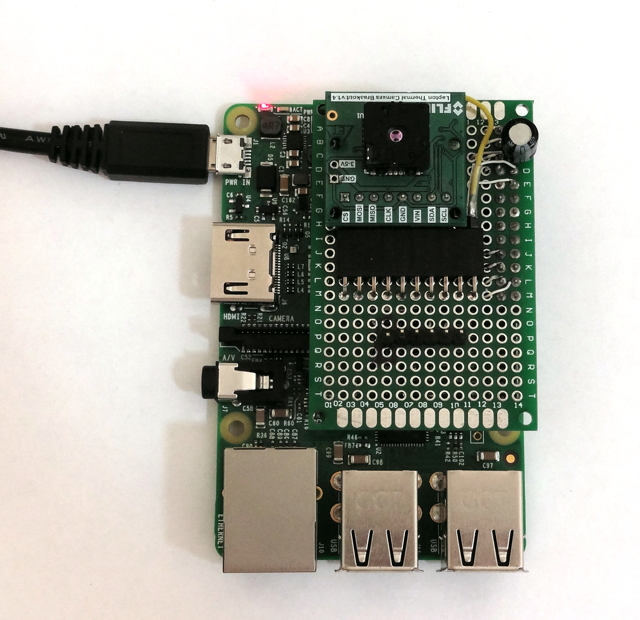Ultimately I'd like to create a solution that comprises a linux daemon communicating with the camera and a socket-based interface to a display application for local display as well as web server for remote display. The Beaglebone Black solution will make use of the VSYNC signal to synchronize transfers. Before tackling the BBB's PRU coding I think it will be a good idea to get the daemon interface running. Since this architecture is like Damien Walsh's leptonic project, it made sense to play around with his code on a Raspberry Pi. His code uses a thread to constantly read the VoSPI interface and even on a Pi 3 has troubles remaining synchronized sometimes because of user process scheduling. I decided to port his C server to use VSYNC and a user-space interrupt handler to see if this might be more reliable.

Some testing showed that the read system call resulted in a fast SPI transfer so the main technical issue seemed to be implementing a fast user-space interrupt handler. I started with Gordon Henderson's wiringPi library because I had experience with it. The result was strange. Latency between the VSYNC interrupt and execution of the ISR routine was low only the first time the process was run after booting. Latency was too high for all subsequent runs and the routine could not get a segment's worth of data before the next interrupt. I tried several mitigation strategies such as renicing the process to the highest priority and binding it to CPU 0 (which seems to be on the front line of handling interrupts) but nothing changed the behavior. After too many hours of piddling around I decided to try PIGPIO which lead to much better and repeatable results. I'm not sure what is happening beneath the hood but. at least for interrupts, this library gives great results. I can get a reliable stream of frames at or near the maximum 9 Hz on the Pi 3. Someday I'd like to see how it performs on a lower performance board like the Pi Zero.
I uploaded my ported version of the leptonic server to github in case anyone wants to see how the ISR was implemented. It can also enable AGC for better images.
Next up is to decide on a socket-based protocol for sending commands to the lepton (for example to tell it where to sample temperature in the image when AGC is running) and for sending complete frames to consumers such as the display application or web server.
 Dan Julio
Dan Julio
Discussions
Become a Hackaday.io Member
Create an account to leave a comment. Already have an account? Log In.